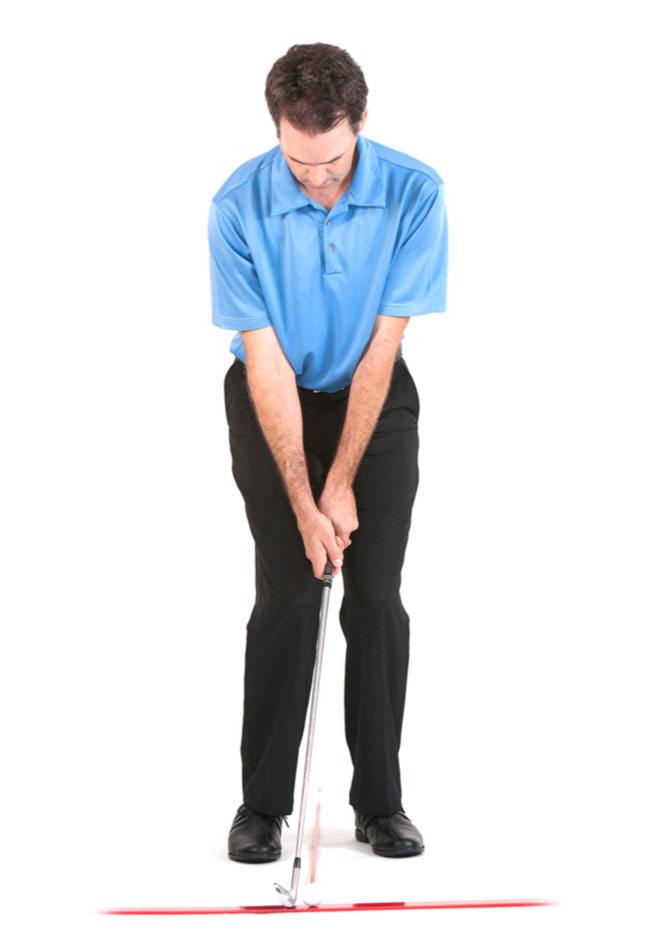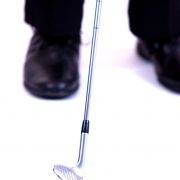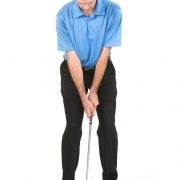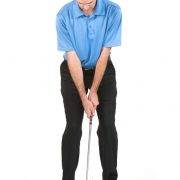Golf Chipping Stance and Motion

For most players, I normally suggest putting whenever possible.The chip shot is used when putting is not going to be practical and we need to pop the ball up in the air just a little bit and get it running to the target.
The chip shot is used from a good lie in the fairway or perhaps if the ball is sitting up in the rough. Depending on the club you decide to use, the properly played chip shot will spend the vast majority of its time traveling along the ground as opposed to flying in the air.
Because the chip shot is not designed to get the ball high in the air, we’ll normally select a middle iron such as a 6, 7, or 8-iron. For shorter chip shots, or shots that we do not want the ball to run as far, we can choose to use a 9-iron, pitching wedge or sand wedge with the same motion.
The set up and swing is the same for each club, so practice with a variety of clubs so you can learn how they tend to behave. It’s important to have a general idea how far the ball will carry versus how far it will roll out. When planning for our chip shot, ideally we would like to have the ball land on the green. If this is not possible, or requires too much risk, then landing on a reliable surface such as the fringe or fairway is normally okay too.
In your set up, choke down on the shaft for more control. Set the club down behind the ball, square to the line where you would like the shot to start. Stand to the ball with your feet relatively close together to limit lateral motion. Move the ball back in your stance, perhaps off your right toe, with your hands forward and the shaft leaning slightly toward the target. Many players like to keep their body weight on their left side for these kinds of shots as well.
When we swing the club for a chip, think of it as being the same as your putting stroke. It is what we call a one lever motion, meaning we are not hinging our wrists and maintaining a straight line down our left arm into the shaft of the club. Keeping our body quiet, we rock our shoulders back and through, allowing the length of our backswing to dictate the length of the shot. Our intention is to strike the ball with a descending blow, without allowing the club head to pass our hands at any point. The follow-through is relatively short, continuing to preserve the straight line down or left arm and the shaft.
In summary, while I always recommend putting whenever possible, chipping is your next safest alternative. With a chip shot, the ball will travel in the air only a short distance, and do most of it’s traveling along the ground. Plan to land your chip shots on a reliable service such as the green, fringe, or fairway. Set up for a descending angle of attack, with the ball back in your stance, shaft leaning forward, and perhaps your weight on your left side. Swing the club in a one lever motion, without breaking your wrists in either direction at any point, just like a putting stroke.









